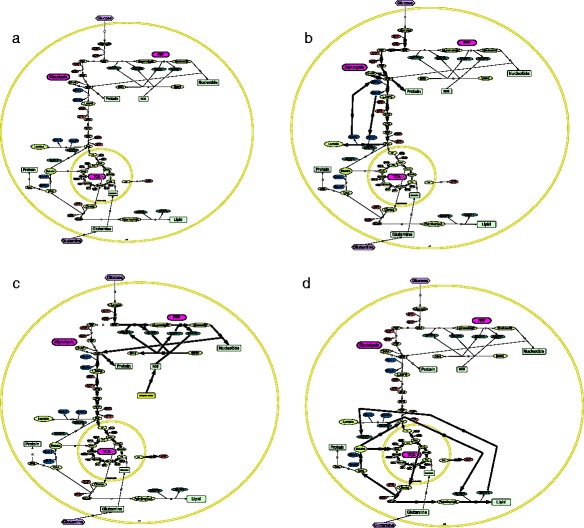Fig. 1.

The central carbon metabolism (CCM). a The different phases of the eukaryotic cell cycle could be explain by reductive-oxidative (redox) transitions in the CCM. b In G1, high ATP demand for protein synthesis is managed by anaerobic glycolysis leading to lactate synthesis. This permits NAD+ regeneration by lactate dehydrogenase and then sustains high NAD+/NADH ratio. c In S phase, the CCM is shifted to pentose phosphate pathway (PPP) for nucleotide synthesis. d In G2 the tricarboxylic acid (TCA) pathway and the electron transport chain are fully active and allow mitochondrial ATP synthesis and lipid synthesis from citrate
